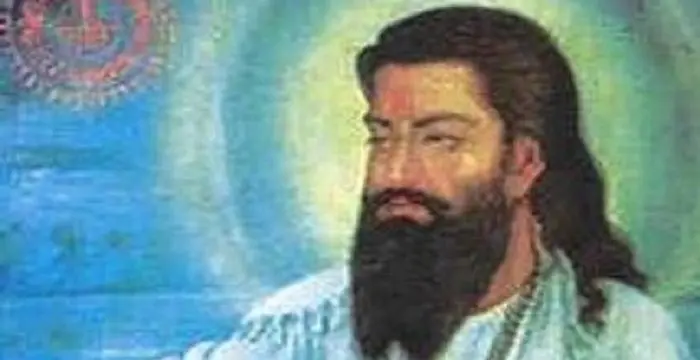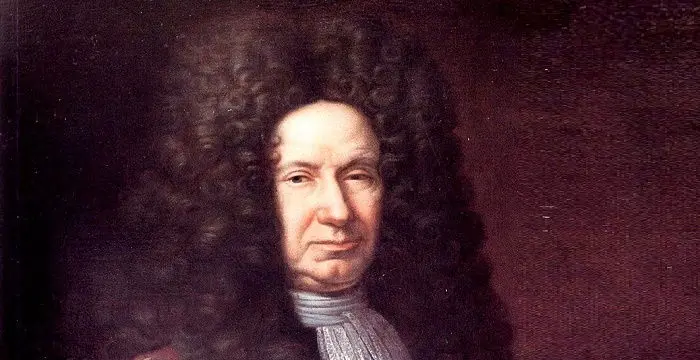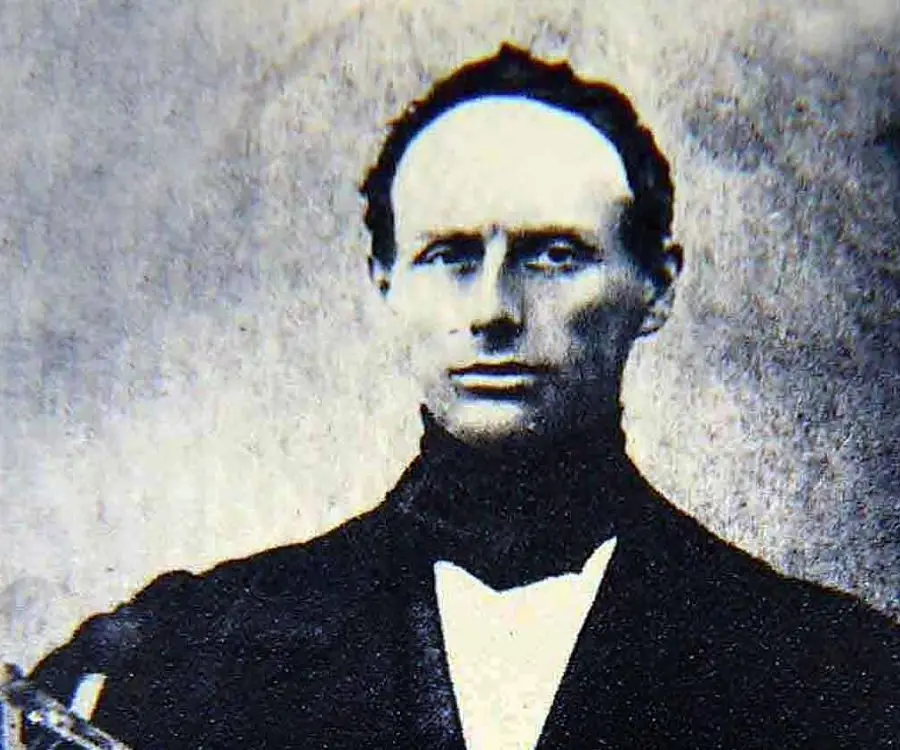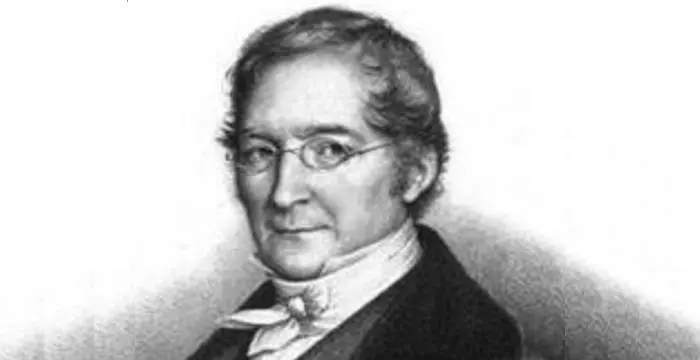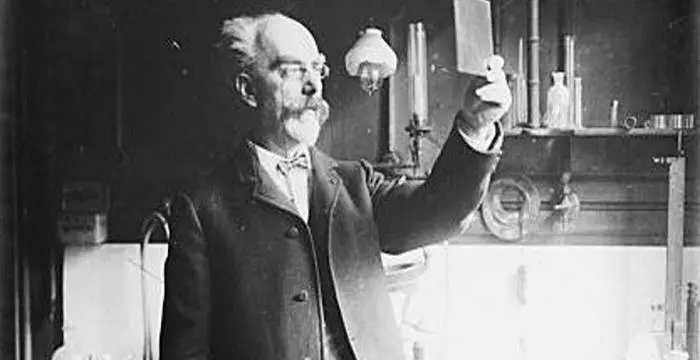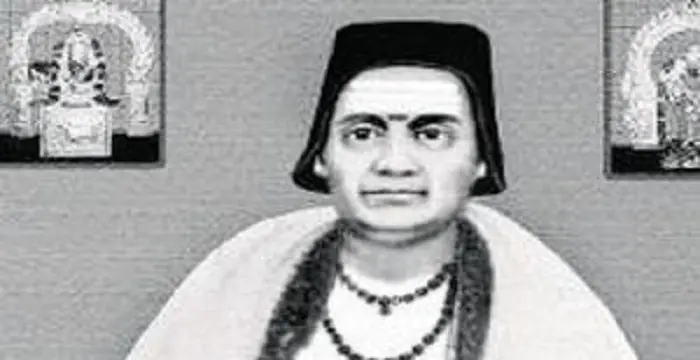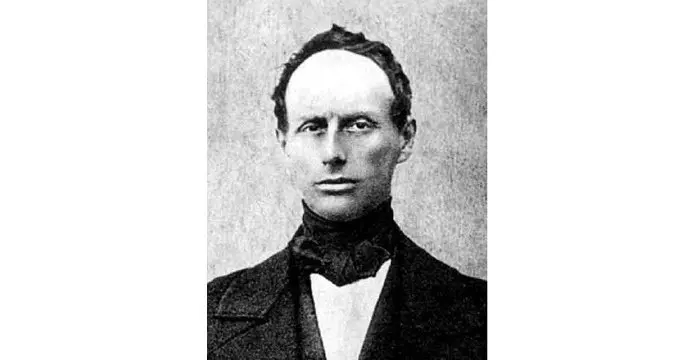
Christian Doppler - Physicists, Birthday and Family
Christian Doppler's Personal Details
Christian Doppler was an Austrian mathematician and physicist, who gave the principle of ‘Doppler Effect’
| Information | Detail |
|---|---|
| Birthday | November 29, 1803 |
| Died on | March 17, 1853 |
| Nationality | Austrian |
| Famous | Scientists, Mathematicians, Mathematicians, Physicists |
| Spouses | Mathilde Sturm Doppler |
| Siblings | Anna Doppler, Johann Doppler, Katharina Doppler Müllbauer, Theresia Doppler |
| Known as | Christian Andreas Doppler |
| Childrens | Adolf Doppler, Bertha Doppler, Hermann Doppler, Ludwig Doppler, Matilda Doppler |
| Universities |
|
| Birth Place | Salzburg, Austria |
| Religion | Lutheran |
| Gender | Male |
| Father | Johann Evngelist Doppler |
| Mother | Therese Doppler |
| Sun Sign | Sagittarius |
| Born in | Salzburg, Austria |
| Famous as | Mathematician & Physicist |
| Died at Age | 49 |
// Famous Mathematicians
Brahmagupta
Brahmagupta was a highly accomplished ancient Indian astronomer and mathematician. This biography of Brahmagupta provides detailed information about his childhood, life, achievements, works & timeline.
Giovanni Domenico Cassini
Giovanni Cassini was a 17th century Italian mathematician, astronomer and astrologer. This biography of Giovanni Cassini provides detailed information about his childhood, life, achievements, works & timeline.
Pythagoras
Pythagoras of Samos was a Greek mathematician and philosopher. Read on to learn more about Pythagoras’s profile, childhood, life and timeline.
Christian Doppler's photo
Who is Christian Doppler?
Christian Doppler was an Austrian mathematician and physicist, who gave the principle of ‘Doppler Effect’, which states that observed frequency of a wave depends on the relative speed of the source and the observer. Doppler was born into a middle class family of stonemasons. From his childhood, he was of frail health, which made him unfit for a stonemason’s job. At the age of 18, he was sent to Vienna to study at the Polytechnic Institute so that he could be trained for some other business. But it was here that Doppler realized the importance of education. He, therefore, returned home to complete his studies at the gymnasium, after which he enrolled at the University of Vienna, finally graduating at the age of 26. Thereafter, he held various academic posts, publishing number of papers, initially in mathematics and then in physics. His most notable work, published at the age of thirty-nine, is today known as ‘Doppler Effect’ or ‘Doppler Shift’. Unfortunately, he did not live long, and died at the age of 49 from a pulmonary disease.
// Famous Physicists
Walter Kohn
Nobel Laureate Walter Kohn was an Austrian-born American theoretical chemist and physicist. Check out this biography to know about his childhood, life, achievements, works & timeline.
Amedeo Avogadro
Amedeo Avogadro was an Italian scientist who formulated what is now known as Avogadro's law. This biography of Amedeo Avogadro provides detailed information about his childhood, life, achievements, works & timeline.
Gabriel Lippmann
Gabriel Lippmann was a French physicist and inventor. He was awarded the Nobel Prize in Physics in 1908. This biography of Lippmann provides detailed information about his childhood, life, research, achievements and timeline.
Childhood & Early Life
Christian Andreas Doppler was born on 29 November 1803, in Makart Platz area of Salzburg, Austria. At that time, the square was known as Hannibal Platz after Hannibal von Raitenau, brother of Prince Archbishop Wolf Dietrich.
His father, Johann Evangialist Doppler, was a well-to-do stonemason. His mother, Therese Doppler, was the daughter of a middle-class comb maker. She had brought in considerable dowry, which added to the family’s wealth and made their life quite comfortable.
Christian Doppler was his parents’ fifth child, having an elder brother named Johann Doppler and three elder sisters named Katharina Doppler Mullbauer, Anna Doppler and Theresia Doppler. It is possible that he also had a few younger siblings; but no detail is available about them.
Information available on Christian’s early life is also very scarce and vague. However, it is certain that although Christian’s elder brother Johann was predestined to inherit the family business his father had planned the same profession for him.
In the trade licensing register of 1804, he had declared that he would not use the second licensed stonemasonry he had bought for 600 guilders in 1797, but would “someday hand it over to a son”. By this, he must have meant his second son, born in the previous year.
Christian, with his weak constitution, was not at all suited for the work of a stonemason. Yet, he showed certain talent in the craft and so his father hoped he would take it up one day, keeping the license for him until 1821 before handing it over to firstborn Johann.
Christian must have begun his education at home. The first information available in public domain is that he enrolled at the German School in Salzburg in 1816. Next in 1819, he joined the Standard School in Linz, where he studied for one year before joining business apprenticeship course in 1821-1822.
In the autumn of 1822, possibly on the recommendation of Simon Stamper, the professor of mathematics at the Salzburg Lyceum, 18 year old Christian enrolled at Vienna Polytechnic Institute with mathematics and physics. It was expected that the course would provide him with practical qualification for starting his own business.
In January 1823, a few months after he joined the Institute, his father passed away. However, it did not have any immediate impact on his education as his mother continued to support him. He thus continued his studies at the Institute.
Although he excelled in his studies he found the curriculum much too one sided. It is not known if he graduated from there; but in 1825 he returned to Salzburg, where with the permission of his mother, he decided to finish his schooling.
As he was above age, he studied in private, concurrently earning money by giving tuitions in mathematics and physics at the Lodron-Rupertinisch-Marianischen Collegium. It helped him to pay his tuition fees at the school.
From the information recorded in the Salzburg Gymnasium register, we know that he took the third year examination on May 23, 1826, achieving good grade in religion, Latin and Greek and ‘excellent’ in mathematics, geography and history. Thereafter, he spent one more year studying philosophy at the Salzburg Lyceum.
In 1827, Christian Doppler enrolled at the University of Vienna with mathematics, mechanics and astronomy; graduating from there in 1829. At that time he was 26 years old and still dependent on his mother.
Career
In 1829, shortly after graduating from the University of Vienna, Christian Doppler received an appointment as the assistant to Adam Burg, the professor of higher mathematics and mechanics at the Vienna Polytechnic Institute. Since Burg was from Salzburg, it is believed that he had a hand in the appointment.
During his assistantship at the Vienna Polytechnic Institute, Doppler published four mathematics papers, the first being ‘A contribution to the theory of parallels’. However, it was only a temporary post and he remained there only up to 1833. Meanwhile, he continued to look for a permanent position.
At that time, getting a permanent job in the academic field was not at all easy. It involved a long written test as well as a short probationary lecture on any unpredictable topic before an appointed commission. Moreover, signs of higher learning also went against the candidate.
Doppler applied for the chair of higher mathematics at Vienna Polytechnic and also to schools in Linz, Salzburg, Gorizia and Ljubljana. On 23 March 1833, he applied for the post of a professor of mathematics at the Technical Secondary School in Prague, but failed to get any response.
The period between 1833 and 1835 was very bad for Doppler. Forced to return home to Salzburg, he maintained himself by working as a bookkeeper at a cotton spinning mill. After 18 months, he became disillusioned about his chances in Austria and decided to migrate to the USA.
He now started making preparation for the journey, selling his possessions and visiting the American Consul in Munich. But in March 1835, as everything was being finalized, he received a call from Technical Secondary School in Prague, inviting him to join a post he had applied two years ago.
Although Doppler joined his post as the professor of arithmetic, algebra, theoretical geometry and accountancy at the Technical Secondary School, it could not satisfy him. He tried for a post in the Polytechnic in Prague, but failed to get it initially.
From 1836 to 1838, he taught higher mathematics for four hours a week at the Polytechnic. At the end of 1837, while Doppler was still teaching there, the post of professor in practical geometry and elementary mathematics became vacant at the Polytechnic and Doppler was formally appointed to it in March 1841.
In 1842, Doppler gave a lecture to the Royal Bohemian Society of Sciences. In the same year, he published his most famous work, "Über das farbige Licht der Doppelsterne und einiger anderer Gestirne des Himmels" (On the colored light of the binary stars and some other stars of the heavens).
Teaching at the Polytechnic was very stressful. In spite of that, Doppler published over 50 articles on mathematics, physics and astronomy during this period. His frail health could not bear such strain and he fell ill in 1844, remaining on sick leave for around two years.
In 1846, he returned to his duty at the Polytechnic in Prague; but due to some professional problems, he began to look for new situation. By that time, he had become famous for his 1842 work and therefore did not have to wait for long.
In 1847, he joined the Academy of Mines and Forests in Banská Štiavnica (Selmecbánya in Hungary) in Slovakia, at that time under the Kingdom of Hungary, as Bergrat and Professor of mathematics, physics, and mechanics. But his tenure was cut short by the revolution that erupted in 1848.
In 1849, Doppler fled to Vienna, where on January 17, 1850 he was appointed Director of the Institute for Experimental Physics at the University of Vienna by an imperial decree. This time, his tenure was cut short by illness and he went on a sick leave, never to return.
Major Works
Christian Doppler is best remembered for his principle of Doppler’s Effect, which he postulated in 1842 work. According to the Doppler’s Effect, color is a manifestation of the frequency of the light wave, as seen by the beholder. He then explained that if either the source or the observer is moved there is a shift in the frequency.
Awards & Achievements
On June 20, 1840, Doppler was made an associate member of the Königliche Böhmische Gesellschaft der Wissenschaften (Royal Bohemian Society), Prague and a full member on November 5, 1843.
In 1848, he was elected to the Imperial Academy of Sciences of Vienna. In the same year, he received an honorary doctorate from the University of Prague.
Personal Life & Legacy
In 1836, Christian Doppler married Mathilde Sturm, the daughter of a middle-class goldsmith, Franz Sturm. She stood by her husband all through his life, giving him the required support whenever he faced any problem. The couple had three sons and two daughters.
Doppler had developed a chest problem in Prague. His condition began to deteriorate as he returned to Vienna in 1849. In November, 1852, he traveled to Venice, hoping warmer climate would help him to recover; but it did not.
By March 1853, his condition deteriorated further and he began to sink very fast. On hearing the news, Mathilde, who had remained at Vienna with their five children, rushed to Venice.
Doppler passed away in Venice on 17 March 1853, at the age of 49, from some kind of pulmonary disease. He lies buried at Venetian island cemetery of San Michele, just inside the entrance.
Lunar Crater Doppler, located at 12.6° S 159.6° W as well as Asteroid 3905 Doppler are named after him.
Trivia
In 1850s, while Doppler was teaching at the University of Vienna, he had Gregor Mendel, later known as the founding father of genetics, as one of his students. It is believed that Doppler, along with Franz Unger, had considerable influence on Mendel’s development.
// Famous Scientists
Juliane Koepcke
Juliane Koepcke is a German-Peruvian biologist, who was the lone survivor among the 92 passengers and crew of the ill-fated LANSA Flight 508 that crashed in the Peruvian rainforest on 24 December 1971. Know more about her life in this biography.
Henry Cavendish
Henry Cavendish was a theoretical chemist and physicist, renowned for discovery of hydrogen and calculation of the mass of earth. To know more about his childhood, profile, timeline and career read on
Konstantin Tsiolkovsky
Konstantin Tsiolkovsky was a Russian rocket scientist and a pioneer of astronautics. This biography provides detailed information about his childhood, family, personal life, career, achievements, etc.
Christian Doppler biography timelines
- // 1797 To 1804In the trade licensing register of 1804, he had declared that he would not use the second licensed stonemasonry he had bought for 600 guilders in 1797, but would “someday hand it over to a son”. By this, he must have meant his second son, born in the previous year.
- // 29th Nov 1803Christian Andreas Doppler was born on 29 November 1803, in Makart Platz area of Salzburg, Austria. At that time, the square was known as Hannibal Platz after Hannibal von Raitenau, brother of Prince Archbishop Wolf Dietrich.
- // 1821Christian, with his weak constitution, was not at all suited for the work of a stonemason. Yet, he showed certain talent in the craft and so his father hoped he would take it up one day, keeping the license for him until 1821 before handing it over to firstborn Johann.
- // 1822In the autumn of 1822, possibly on the recommendation of Simon Stamper, the professor of mathematics at the Salzburg Lyceum, 18 year old Christian enrolled at Vienna Polytechnic Institute with mathematics and physics. It was expected that the course would provide him with practical qualification for starting his own business.
- // Jan 1823In January 1823, a few months after he joined the Institute, his father passed away. However, it did not have any immediate impact on his education as his mother continued to support him. He thus continued his studies at the Institute.
- // 1825Although he excelled in his studies he found the curriculum much too one sided. It is not known if he graduated from there; but in 1825 he returned to Salzburg, where with the permission of his mother, he decided to finish his schooling.
- // 23rd May 1826From the information recorded in the Salzburg Gymnasium register, we know that he took the third year examination on May 23, 1826, achieving good grade in religion, Latin and Greek and ‘excellent’ in mathematics, geography and history. Thereafter, he spent one more year studying philosophy at the Salzburg Lyceum.
- // 1827 To 1829In 1827, Christian Doppler enrolled at the University of Vienna with mathematics, mechanics and astronomy; graduating from there in 1829. At that time he was 26 years old and still dependent on his mother.
- // 1829In 1829, shortly after graduating from the University of Vienna, Christian Doppler received an appointment as the assistant to Adam Burg, the professor of higher mathematics and mechanics at the Vienna Polytechnic Institute. Since Burg was from Salzburg, it is believed that he had a hand in the appointment.
- // 1833During his assistantship at the Vienna Polytechnic Institute, Doppler published four mathematics papers, the first being ‘A contribution to the theory of parallels’. However, it was only a temporary post and he remained there only up to 1833. Meanwhile, he continued to look for a permanent position.
- // 1833 To 1835The period between 1833 and 1835 was very bad for Doppler. Forced to return home to Salzburg, he maintained himself by working as a bookkeeper at a cotton spinning mill. After 18 months, he became disillusioned about his chances in Austria and decided to migrate to the USA.
- // 23rd Mar 1833Doppler applied for the chair of higher mathematics at Vienna Polytechnic and also to schools in Linz, Salzburg, Gorizia and Ljubljana. On 23 March 1833, he applied for the post of a professor of mathematics at the Technical Secondary School in Prague, but failed to get any response.
- // Mar 1835He now started making preparation for the journey, selling his possessions and visiting the American Consul in Munich. But in March 1835, as everything was being finalized, he received a call from Technical Secondary School in Prague, inviting him to join a post he had applied two years ago.
- // 1836In 1836, Christian Doppler married Mathilde Sturm, the daughter of a middle-class goldsmith, Franz Sturm. She stood by her husband all through his life, giving him the required support whenever he faced any problem. The couple had three sons and two daughters.
- // 20th Jun 1840 To 5th Nov 1843On June 20, 1840, Doppler was made an associate member of the Königliche Böhmische Gesellschaft der Wissenschaften (Royal Bohemian Society), Prague and a full member on November 5, 1843.
- // 1842In 1842, Doppler gave a lecture to the Royal Bohemian Society of Sciences. In the same year, he published his most famous work, "Über das farbige Licht der Doppelsterne und einiger anderer Gestirne des Himmels" (On the colored light of the binary stars and some other stars of the heavens).
- // 1842 To 1846In 1846, he returned to his duty at the Polytechnic in Prague; but due to some professional problems, he began to look for new situation. By that time, he had become famous for his 1842 work and therefore did not have to wait for long.
- // 1842Christian Doppler is best remembered for his principle of Doppler’s Effect, which he postulated in 1842 work. According to the Doppler’s Effect, color is a manifestation of the frequency of the light wave, as seen by the beholder. He then explained that if either the source or the observer is moved there is a shift in the frequency.
- // 1844Teaching at the Polytechnic was very stressful. In spite of that, Doppler published over 50 articles on mathematics, physics and astronomy during this period. His frail health could not bear such strain and he fell ill in 1844, remaining on sick leave for around two years.
- // 1847 To 1848In 1847, he joined the Academy of Mines and Forests in Banská Štiavnica (Selmecbánya in Hungary) in Slovakia, at that time under the Kingdom of Hungary, as Bergrat and Professor of mathematics, physics, and mechanics. But his tenure was cut short by the revolution that erupted in 1848.
- // 1848In 1848, he was elected to the Imperial Academy of Sciences of Vienna. In the same year, he received an honorary doctorate from the University of Prague.
- // 1849 To 17th Jan 1850In 1849, Doppler fled to Vienna, where on January 17, 1850 he was appointed Director of the Institute for Experimental Physics at the University of Vienna by an imperial decree. This time, his tenure was cut short by illness and he went on a sick leave, never to return.
- // 1849 To 1852Doppler had developed a chest problem in Prague. His condition began to deteriorate as he returned to Vienna in 1849. In November, 1852, he traveled to Venice, hoping warmer climate would help him to recover; but it did not.
- // 1850In 1850s, while Doppler was teaching at the University of Vienna, he had Gregor Mendel, later known as the founding father of genetics, as one of his students. It is believed that Doppler, along with Franz Unger, had considerable influence on Mendel’s development.
- // Mar 1853By March 1853, his condition deteriorated further and he began to sink very fast. On hearing the news, Mathilde, who had remained at Vienna with their five children, rushed to Venice.
- // 17th Mar 1853Doppler passed away in Venice on 17 March 1853, at the age of 49, from some kind of pulmonary disease. He lies buried at Venetian island cemetery of San Michele, just inside the entrance.
// Famous Mathematicians
Grigori Perelman
Grigori Perelman is a Russian mathematician who is best known for his contributions to Riemannian geometry and geometric topology. Check out this biography to know about his childhood, family life, achievements and fun facts about him.
Terence Tao
Terence Tao is an Australian- American mathematician who has contributed enormously to the field of mathematics. Check out this biography to know about his childhood, family life and achievements.
Isaac Newton
Isaac Newton was an English scientist and mathematician, who discovered gravitation and Newtonian Mechanics. Read this biography to find more on his life.
Brahmagupta
Brahmagupta was a highly accomplished ancient Indian astronomer and mathematician. This biography of Brahmagupta provides detailed information about his childhood, life, achievements, works & timeline.
Giovanni Domenico Cassini
Giovanni Cassini was a 17th century Italian mathematician, astronomer and astrologer. This biography of Giovanni Cassini provides detailed information about his childhood, life, achievements, works & timeline.
Bhāskara II
Bhaskara II was a 12th century Indian mathematician. This biography of Bhaskara II provides detailed information about his childhood, life, achievements, works & timeline.
Christian Doppler's FAQ
What is Christian Doppler birthday?
Christian Doppler was born at 1803-11-29
When was Christian Doppler died?
Christian Doppler was died at 1853-03-17
Where was Christian Doppler died?
Christian Doppler was died in Venice, Italy
Which age was Christian Doppler died?
Christian Doppler was died at age 49
Where is Christian Doppler's birth place?
Christian Doppler was born in Salzburg, Austria
What is Christian Doppler nationalities?
Christian Doppler's nationalities is Austrian
Who is Christian Doppler spouses?
Christian Doppler's spouses is Mathilde Sturm Doppler
Who is Christian Doppler siblings?
Christian Doppler's siblings is Anna Doppler, Johann Doppler, Katharina Doppler Müllbauer, Theresia Doppler
Who is Christian Doppler childrens?
Christian Doppler's childrens is Adolf Doppler, Bertha Doppler, Hermann Doppler, Ludwig Doppler, Matilda Doppler
What was Christian Doppler universities?
Christian Doppler studied at University of Vienna (1829), TU Wien (1822–1825)
What is Christian Doppler's religion?
Christian Doppler's religion is Lutheran
Who is Christian Doppler's father?
Christian Doppler's father is Johann Evngelist Doppler
Who is Christian Doppler's mother?
Christian Doppler's mother is Therese Doppler
What is Christian Doppler's sun sign?
Christian Doppler is Sagittarius
How famous is Christian Doppler?
Christian Doppler is famouse as Mathematician & Physicist
